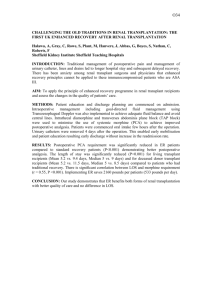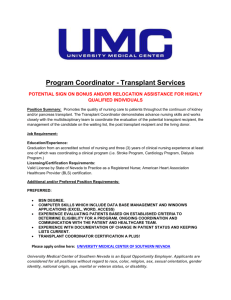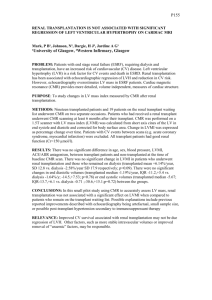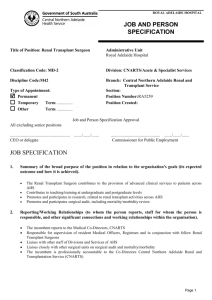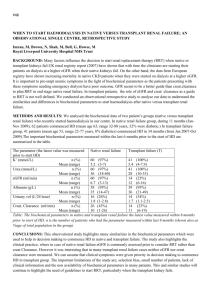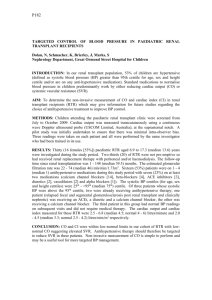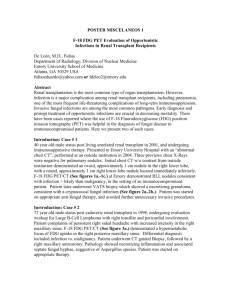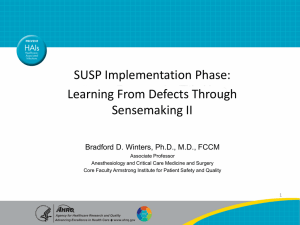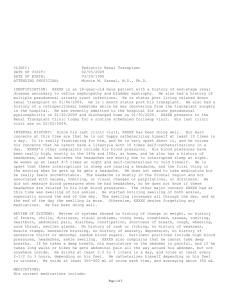Treating Post Transplant Anaemia improves Quality of Life but does
advertisement
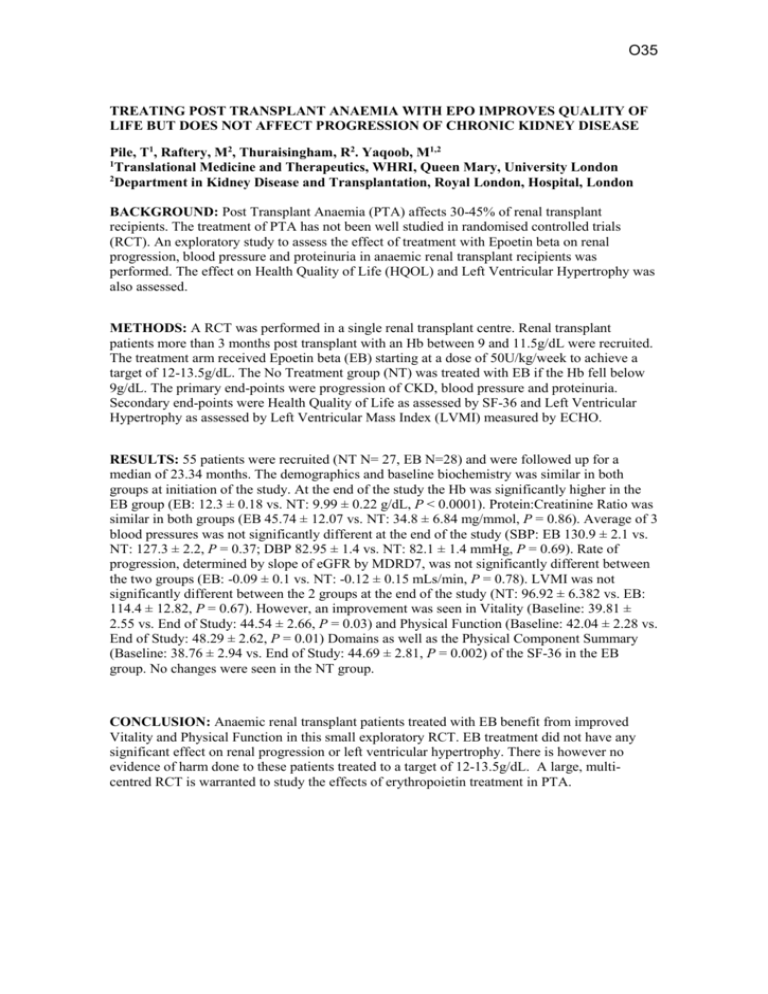
O35 TREATING POST TRANSPLANT ANAEMIA WITH EPO IMPROVES QUALITY OF LIFE BUT DOES NOT AFFECT PROGRESSION OF CHRONIC KIDNEY DISEASE Pile, T1, Raftery, M2, Thuraisingham, R2. Yaqoob, M1,2 1 Translational Medicine and Therapeutics, WHRI, Queen Mary, University London 2 Department in Kidney Disease and Transplantation, Royal London, Hospital, London BACKGROUND: Post Transplant Anaemia (PTA) affects 30-45% of renal transplant recipients. The treatment of PTA has not been well studied in randomised controlled trials (RCT). An exploratory study to assess the effect of treatment with Epoetin beta on renal progression, blood pressure and proteinuria in anaemic renal transplant recipients was performed. The effect on Health Quality of Life (HQOL) and Left Ventricular Hypertrophy was also assessed. METHODS: A RCT was performed in a single renal transplant centre. Renal transplant patients more than 3 months post transplant with an Hb between 9 and 11.5g/dL were recruited. The treatment arm received Epoetin beta (EB) starting at a dose of 50U/kg/week to achieve a target of 12-13.5g/dL. The No Treatment group (NT) was treated with EB if the Hb fell below 9g/dL. The primary end-points were progression of CKD, blood pressure and proteinuria. Secondary end-points were Health Quality of Life as assessed by SF-36 and Left Ventricular Hypertrophy as assessed by Left Ventricular Mass Index (LVMI) measured by ECHO. RESULTS: 55 patients were recruited (NT N= 27, EB N=28) and were followed up for a median of 23.34 months. The demographics and baseline biochemistry was similar in both groups at initiation of the study. At the end of the study the Hb was significantly higher in the EB group (EB: 12.3 ± 0.18 vs. NT: 9.99 ± 0.22 g/dL, P < 0.0001). Protein:Creatinine Ratio was similar in both groups (EB 45.74 ± 12.07 vs. NT: 34.8 ± 6.84 mg/mmol, P = 0.86). Average of 3 blood pressures was not significantly different at the end of the study (SBP: EB 130.9 ± 2.1 vs. NT: 127.3 ± 2.2, P = 0.37; DBP 82.95 ± 1.4 vs. NT: 82.1 ± 1.4 mmHg, P = 0.69). Rate of progression, determined by slope of eGFR by MDRD7, was not significantly different between the two groups (EB: -0.09 ± 0.1 vs. NT: -0.12 ± 0.15 mLs/min, P = 0.78). LVMI was not significantly different between the 2 groups at the end of the study (NT: 96.92 ± 6.382 vs. EB: 114.4 ± 12.82, P = 0.67). However, an improvement was seen in Vitality (Baseline: 39.81 ± 2.55 vs. End of Study: 44.54 ± 2.66, P = 0.03) and Physical Function (Baseline: 42.04 ± 2.28 vs. End of Study: 48.29 ± 2.62, P = 0.01) Domains as well as the Physical Component Summary (Baseline: 38.76 ± 2.94 vs. End of Study: 44.69 ± 2.81, P = 0.002) of the SF-36 in the EB group. No changes were seen in the NT group. CONCLUSION: Anaemic renal transplant patients treated with EB benefit from improved Vitality and Physical Function in this small exploratory RCT. EB treatment did not have any significant effect on renal progression or left ventricular hypertrophy. There is however no evidence of harm done to these patients treated to a target of 12-13.5g/dL. A large, multicentred RCT is warranted to study the effects of erythropoietin treatment in PTA.

